
For this assessment, students use their knowledge of expressions to solve a problem and explain why their answer is correct.
- Subject:
- Mathematics
- Material Type:
- Assessment
- Provider:
- Howard County Public Schools
- Date Added:
- 03/07/2017

For this assessment, students use their knowledge of expressions to solve a problem and explain why their answer is correct.

For this assessment, students find the value of an expression and explain their answer.

In this task, students find equivalent expressions by visualizing a familiar activity involving distance.
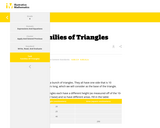
In this task, students write an expression for the perimeter of a rectangle and use the expression to find the perimeter of a rectangle with a given length and width.

This parent guide supports parents in helping their child at home with the 6th grade Math content.

This resource accompanies our Rethink 6th Grade Math course. It includes ideas for use, ways to support exceptional children, ways to extend learning, digital resources and tools, tips for supporting English Language Learners and students with visual and hearing impairments. There are also ideas for offline learning.

In this lesson, students have the opportunity to explore the algebra concepts of variable, constant, expressions and equations.

In this lesson, students learn that recognizing and using patterns is a valuable problem solving tool.
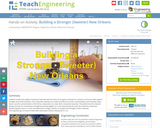
Students create and analyze composite materials with the intent of using the materials to construct a structure with optimal strength and minimal density. The composite materials are made of puffed rice cereal, marshmallows and chocolate chips. Student teams vary the concentrations of the three components to create their composite materials. They determine the material density and test its compressive strength by placing weights on it and measuring how much the material compresses. Students graph stress vs. strain and determine Young's modulus to analyze the strength of their materials.
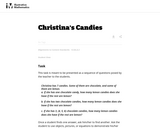
The purpose of this task is for students to find different pairs of numbers that sum to 7.
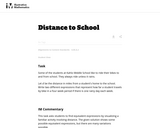
This task asks students to find equivalent expressions by visualizing a familiar activity involving distance. The given solution shows some possible equivalent expressions, but there are many variations possible.
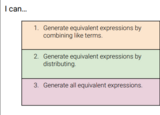
Students will build their learning on combining like terms, distributive property, and combining like terms when using the distributive property. Students will be able to choose what they complete for each section which gives them some variability in their learning. Students are also able to choose between taking a typical test or completing a "more fun" activity such as creating a poster or videoing themself teaching a couple problems. This resource was developed as part of a professional learning opportunity funded by the NCDPI Digital Learning Initiative Planning Grant.
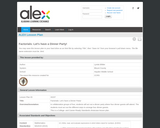
Students will work in collaborate groups of four to act out a dinner party where four dinner guests will attend. The students must act out the different ways to arrange four dinner guests.
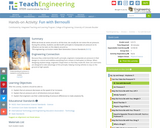
While we know air exists around us all the time, we usually do not notice the air pressure. During this activity, students use Bernoulli's principle to manipulate air pressure so its influence can be seen on the objects around us.
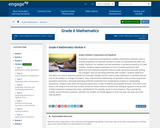
In Module 4, Expressions and Equations, students extend their arithmetic work to include using letters to represent numbers in order to understand that letters are simply "stand-ins" for numbers and that arithmetic is carried out exactly as it is with numbers.

Grade 6 Module 4: Expressions and Equations. Contains 34 Lessons.
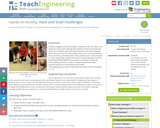
Students engage in the second design challenge of the unit, which is an extension of the maze challenge they solved in the first lesson/activity of this unit. Students extend the ideas learned in the maze challenge with a focus more on the robot design. Gears are a very important part of any machine, particularly when it has a power source such as engine or motor. Specifically, students learn how to design the gear train from the LEGO MINDSTORMS(TM) NXT servomotor to the wheel to make the LEGO taskbot go faster or slower. A PowerPoint® presentation, pre/post quizzes and a worksheet are provided.

For this activity, students explore simple linear functions.
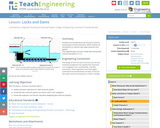
Students are introduced to the structure, function and purpose of locks and dams, which involves an introduction to Pascal's law, water pressure and gravity.

This activity gives a fun introduction to two-step equations.